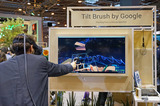
Explore how to use Tilt Brush.
- Subject:
- Architecture and Design
- Educational Technology
- Electronic Technology
- Graphic Arts
- Visual Arts
- Material Type:
- Activity/Lab
- Interactive
- Lesson
- Simulation
- Author:
- Cynthia Vincent
- Date Added:
- 10/29/2021

Explore how to use Tilt Brush.

Welcome to the FEMCON Video Showcase, your gateway to inspiring stories from women and men in the construction industry across Ireland, Spain, Poland, and Germany. Our collection of video interviews highlights the experiences, challenges, and successes of females in construction, showcasing the vital role women play in this dynamic field. At FEMCON, we aim to promote gender equality in construction by sharing real-life stories from professionals who are making a difference. Through our video interviews, we hope to inspire more women to join the industry and foster an inclusive environment where everyone can thrive.
Explore our videos to hear directly from women and men who are breaking barriers and challenging stereotypes. Learn about their journeys, the obstacles they've overcome, and their visions for a more diverse and equitable construction industry. Women bring unique perspectives, skills, and strengths to construction. Their contributions are essential for innovation, creativity, and sustainable growth in the industry. Discover why gender diversity is not just important but necessary for the future of construction.
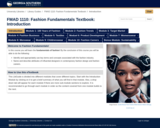
In this course you will learn the fundamentals of fashion! By the conclusion of this course you will be able to do the following:
- Identify and appropriately use key terms and concepts associated with the fashion industry.
- Name and describe attributes of influential designers in contemporary fashion design and fashion careers.
How to Use this eTextbook:
This LibGuide is divided into different modules that cover different topics. Start with the Introduction Module by clicking on it to get a brief summary of what you will find in that module. Also, a drop down tab will appear for each module if there are more sub-module sections to explore. It is recommended to go through each module in order as the content covered from one module builds to the next.
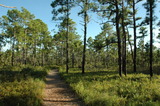
This image is a indicator of the importancE of protecting our forest resources. Illegal cutting of trees for urban expnasion, agricultural or any other huan activities should not be condonded. Forests should be protected as they have an important role in soil and water conservation.

Throughout this lesson, the students will learn about the history of weaving and the different types of fabric weaves. This is designed to take one 50-minute class period, but it may take 2 class periods for the students to complete all of their sample weaves.

Throughout this lesson, students will learn about sustainability in the textile industry by researching fast fashion. While completing the workbook, students begin with learning what the fast fashion industry is. Next, they learn about the negative impacts of fast fashion. Students will explore the environmental impact of fast fashion. Finally, students will learn about what they can do to consume textiles in a sustainable manner. All throughout the activity, students are reflecting on their learning by answering questions over the content and their responses to it. This lesson on fast fashion is a student-directed workbook - perfect for a day with a substitute teacher. This lesson is designed to take one, 50-minute class period.

The purpose of Design Dilemma is to encourage students to use resourceful and creative behaviors to think like a scientist. Students will demonstrate these behaviors to design and build a suitable structure for a fourth little pig. Although the use of the book The Fourth Little Pig is helpful, the module may be taught without it. This module is meant for all students. The classroom teacher should work with a specialist or special educator to find or develop alternate activities or resources for visually impaired students, where appropriate.

Native American Tribes
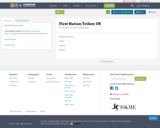
Native American Tribes
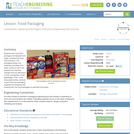
This lesson focuses on how food packages are designed and made. Students will learn three of the main functions of a food package. They will learn what is necessary of the design and materials of a package to keep food clean, protect or aid in the physical and chemical changes that can take place in a food, and identify a food appealingly. Then, in the associated activity, the students will have the opportunity to become packaging engineers by designing and building their own food package for a particular type of food.

Short Description:
A practical how-to illustrating the process of developing a new food product from ideation and formulation to processing and lastly commercialization. This book highlights the overall process and gives instructions for each of the steps along the way.
Long Description:
A practical how-to illustrating the process of developing a new food product from ideation and formulation to processing and lastly commercialization. This book highlights the overall process and gives instructions for each of the steps along the way.
Word Count: 112920
(Note: This resource's metadata has been created automatically by reformatting and/or combining the information that the author initially provided as part of a bulk import process.)
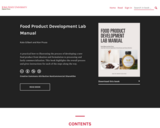
Short Description:
A practical how-to illustrating the process of developing a new food product from ideation and formulation to processing and lastly commercialization. This book highlights the overall process and gives instructions for each of the steps along the way.
Long Description:
A practical how-to illustrating the process of developing a new food product from ideation and formulation to processing and lastly commercialization. This book highlights the overall process and gives instructions for each of the steps along the way.
Word Count: 29611
(Note: This resource's metadata has been created automatically by reformatting and/or combining the information that the author initially provided as part of a bulk import process.)

Inspired by the work of the architect Antoni Gaudi, this research workshop will explore three-dimensional problems in the static equilibrium of structural systems. Through an interdisciplinary collaboration between computer science and architecture, we will develop design tools for determining the form of three-dimensional structural systems under a variety of loads. The goal of the workshop is to develop real-time design and analysis tools which will be useful to architects and engineers in the form-finding of efficient three-dimensional structural systems.

IntroductionThe Concept behind Form and Function(s): Sustainable Design meets Computational ThinkingWhen Architecture, the Natural Sciences, Mathematics and Computing intermingle something beautiful and purposeful occurs. Through this course of study, students are challenged to think computationally by considering the notion of “design” through three perspectives on form and function. Through the first perspective, we challenge students to consider a structure’s architectural form in the context of its function within the ecology in which it belongs. A second perspective on form and function is provided by way of the natural sciences, where students explore nature’s designs, which are created through natural selection. Finally, form and function are further abstracted through a mathematical and computational perspective that focuses on how natural selection can be emulated through modelling and coding. The journey comes full circle, and the three perspectives coalesce when students engage in a hack-a-thon in which they model and code evolutionary algorithms to design a better building.Watch the Form and Function(s) animation on the Callysto Youtube channel.
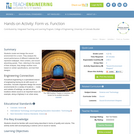
Students model and design the sound environment for a room. They analyze the sound performance of different materials that represent wallpaper, thick curtains, and sound-absorbing panels. Then, referring to the results of their analysis, they design another room based on certain specifications, and test their designs.

Short Description:
Foundation Drawing for Art 1100 serves as the primary text for the course of the same name at the UNO School of the Arts.
Word Count: 13003
(Note: This resource's metadata has been created automatically by reformatting and/or combining the information that the author initially provided as part of a bulk import process.)

Information taken from https://www.google.com/
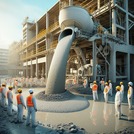
In this comprehensive unit, titled "From Raw Materials to Concrete: The Science of Portland Cement Manufacturing," students will embark on a fascinating exploration of the entire process of Portland cement production. They will delve into the fundamental aspects of Portland cement, including its definition, constituents, functions, and various types. Students will also explore the processes involved in cement manufacturing, focusing on both the wet and dry methods. They will differentiate between these production processes, analyzing their advantages, and disadvantages.
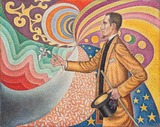
Adapted by Amanda Hulsey- Image By Paul Signac - First uploaded to de.wikipedia by de:Benutzer:Hans Bug. See MoMA, Public Domain, https://commons.wikimedia.org/w/index.php?curid=489515

These five key components of business write for us operations show just how wide-ranging and also essential the field of business operations is to a business.